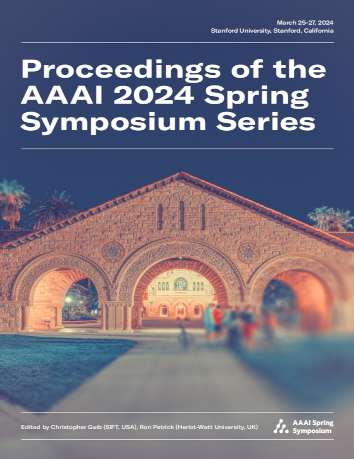4D-based Robot Navigation Using Relativistic Image Processing
DOI:
https://doi.org/10.1609/aaaiss.v4i1.31818Abstract
Machine perception is an important prerequisite for safe interaction and locomotion in dynamic environments. This requires not only the timely perception of surrounding geometries and distances but also the ability to react to changing situations through predefined, learned but also reusable skill endings of a robot so that physical damage or bodily harm can be avoided. In this context, 4D perception offers the possibility of predicting one’s own position and changes in the environment over time. In this paper, we present a 4D-based approach to robot navigation using relativistic image processing. Relativistic image processing handles the temporalrelated sensor information in a tensor model within a constructive 4D space. 4D-based navigation expands the causal understanding and the resulting interaction radius of a robot through the use of visual and sensory 4D information.Downloads
Published
2024-11-08
How to Cite
Müller, S., & Kranzlmüller, D. (2024). 4D-based Robot Navigation Using Relativistic Image Processing. Proceedings of the AAAI Symposium Series, 4(1), 367-372. https://doi.org/10.1609/aaaiss.v4i1.31818
Issue
Section
Unifying Representations for Robot Application Development - Research Papers

